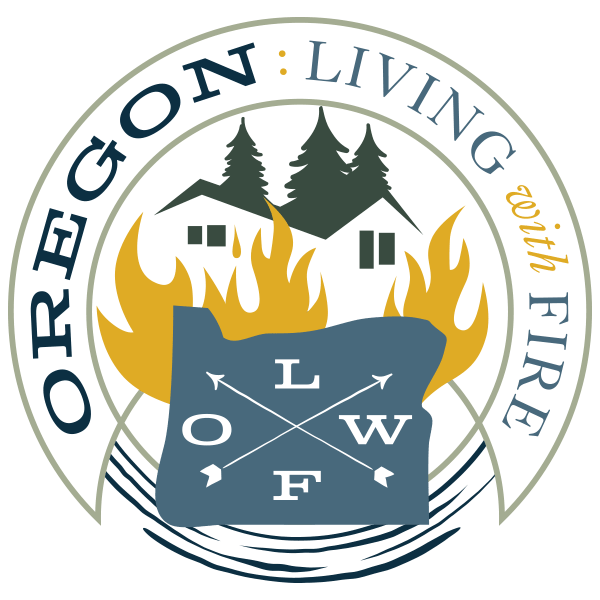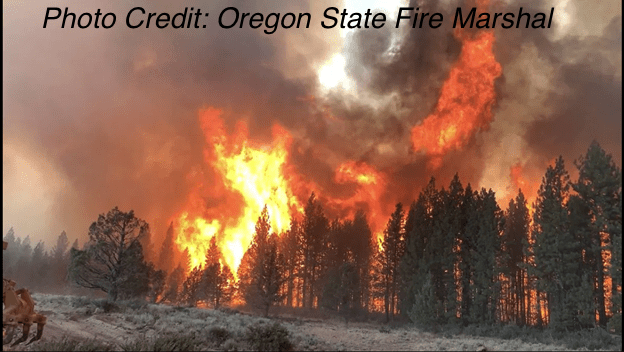Photo Credit: Featured image courtesy of the Oregon State Fire Marshal‘s Office
In our last post, we explored how strategies like thinning dense trees, clearing dry brush, and using prescribed burns are powerful tools for reducing wildfire risks. Now, we’re diving into how these specific fuels treatments were put to the test during the Bootleg Fire in 2021.
Spanning over 400,000 acres in Oregon’s Fremont-Winema National Forest, the Bootleg Fire became one of the largest wildfires in the U.S. that year. While the fire devastated much of the forest, areas that had undergone thinning, mechanical removal of ladder fuels, and prescribed burns fared much better. In treated areas, the fire’s intensity was significantly lower, allowing firefighters to control the blaze more effectively and ultimately saving portions of the landscape from extreme damage.
One standout example is The Nature Conservancy’s Sycan Marsh Preserve, where these fuels treatments were carried out over several years. When the Bootleg Fire reached this area, the treated sections experienced 75% less tree mortality compared to untreated areas. Thinning of overly dense tree stands, removal of ladder fuels—which are lower branches and vegetation that allow flames to spread upward into the tree canopy—and controlled burns were crucial in making the preserve more resilient to wildfire.
Why Fuels Treatments Matter
Fuels treatments aren’t just about removing brush or thinning trees. Each strategy plays a role in reducing the intensity and spread of wildfires. Thinning dense tree stands opens the forest, reducing the available fuel for wildfires. Mechanical removal of ladder fuels prevents fire from spreading vertically into the canopy, where it can become uncontrollable. Prescribed burns mimic natural fire cycles, removing dead vegetation that would otherwise fuel larger fires. Together, these treatments create firebreaks and reduce the chances of a wildfire escalating out of control.
Investing in the Future
Beyond the success at Sycan Marsh, fuels treatments are being implemented statewide. In 2023, the Grant Soil and Water Conservation District received nearly $10 million to clear hazardous fuels along key evacuation routes in eastern Oregon. This project includes thinning trees, removing flammable vegetation, and creating defensible space around critical infrastructure to protect communities from future wildfires.
The Road Ahead
The success of fuels treatments during the Bootleg Fire shows how essential these proactive measures are, especially as wildfires continue to grow in size and intensity. Moving forward, thinning, ladder fuel removal, and prescribed burns will be critical for protecting both our forests and the communities that depend on them. These strategies are more than just fire prevention—they are investments in building long-term resilience.
Stay tuned as we continue the conversation about wildfire strategies and the role fuels treatments play in creating fire-resilient landscapes.
Further Reading:
- Watch the documentary “Through the Fire” – Prescribed burns in the Sycan Marsh – Holden Films.
- Watch “Fire Season,” a short documentary about the Bootleg Fire and wildfire strategies – C-SPAN StudentCam 2022.
- Case study on fuels treatments in the Sycan Marsh – Deschutes Collaborative Forest Project.
- USDA Forest Service Press Release: Fuels Treatment Areas in the Bootleg Fire – USDA Forest Service.
- Read about hazardous fuel removal funding in Grant County – Oregon Capital Chronicle.

